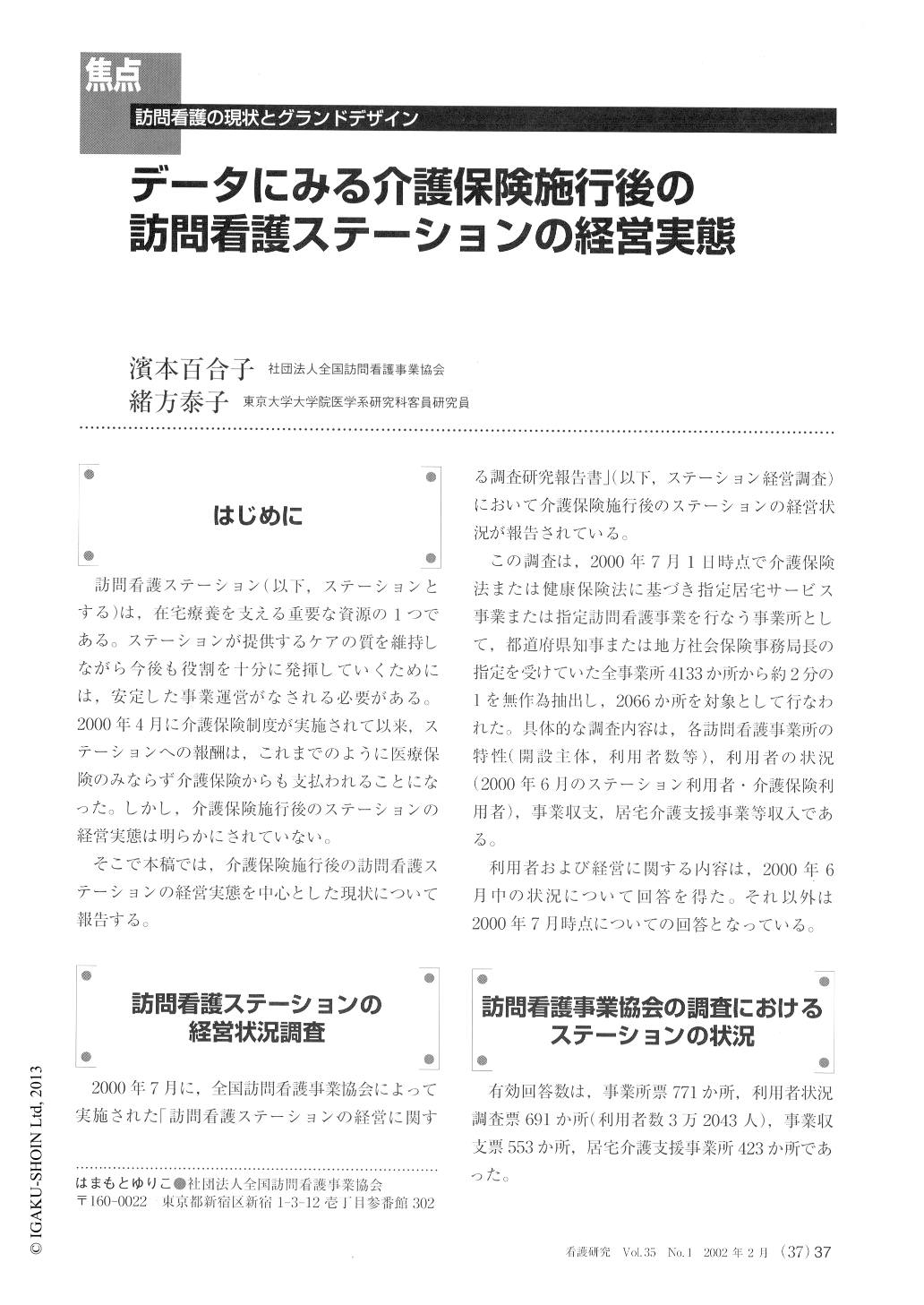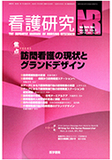Japanese
English
- 有料閲覧
- Abstract 文献概要
- 1ページ目 Look Inside
- サイト内被引用 Cited by
はじめに
訪問看護ステーション(以下,ステーションとする)は,在宅療養を支える重要な資源の1つである。ステーションが提供するケアの質を維持しながら今後も役割を十分に発揮していくためには,安定した事業運営がなされる必要がある。2000年4月に介護保険制度が実施されて以来,ステーションへの報酬は,これまでのように医療保険のみならず介護保険からも支払われることになった。しかし,介護保険施行後のステーションの経営実態は明らかにされていない。
そこで本稿では,介護保険施行後の訪問看護ステーションの経営実態を中心とした現状について報告する。
In Japan, Home Visit Nursing Care Station (HVNCS) is one of the most important resources for home care patients. Stability management of these HVNCSs is vital in order to maintain quality care for home care patients.
Since the implementation of the Long-term care insurance in April 2000, financing of these HVNCSs is paid Long-term care insurance or in case of insufficient benefits a combination of both Long-term care insurance and Health care insurance. The effects of the new insurance on actual management practices of these HVNCSs have not been investigated.
This article will report specifically about “The Report on Research about Economic Management of Home Visit Nursing Care Station” as published by the National Association of Home-Visit Nursing Care Station in December2000. Of 4133 HVNCSs in Japan, 771 of 2166 reply selected HVNCSs participated in that research.
80% of the patients are receiving the Long-term care insurance. Their level of care is high as measured according to Ministry Health and Welfare standards. 76.7% of the income of these HVNCSs comes from the Long-term care insurance, while staff salaries account for 85.1% of these HVNCSs expenditures. More longitudinal studies are recommended in order to test the result that was identified in the above-mentioned cross-sectional study.

Copyright © 2002, Igaku-Shoin Ltd. All rights reserved.


